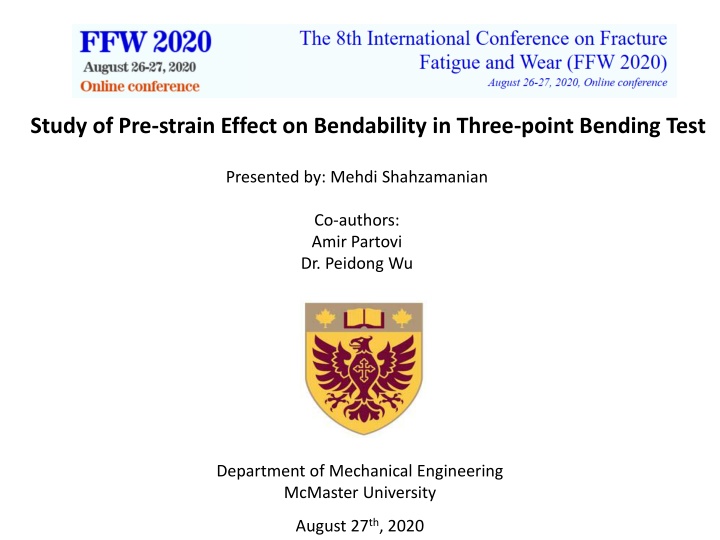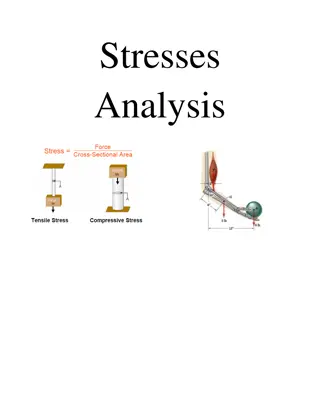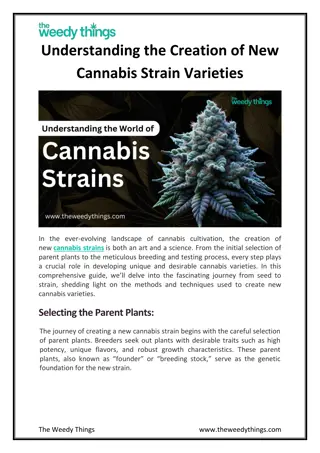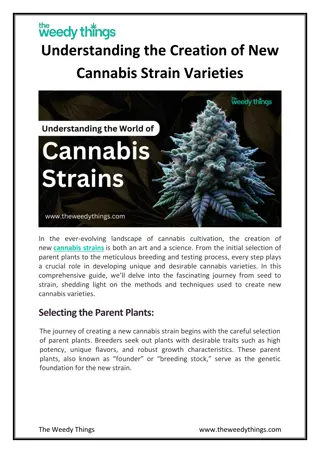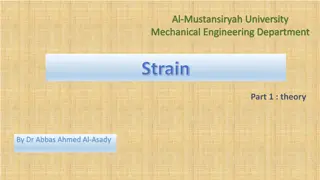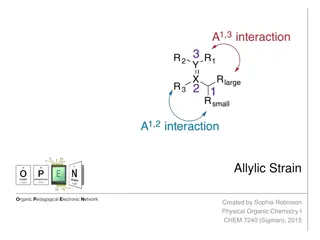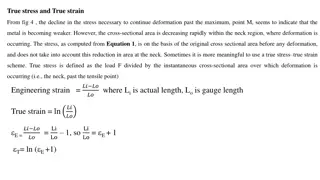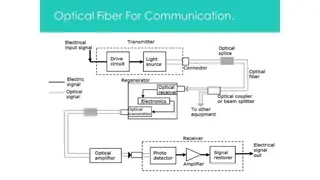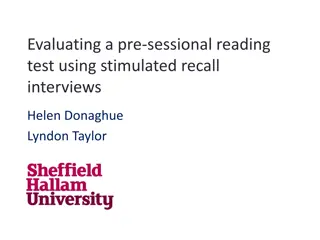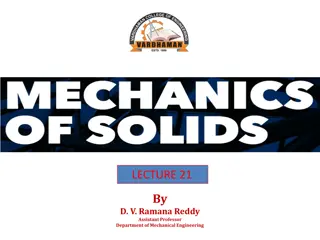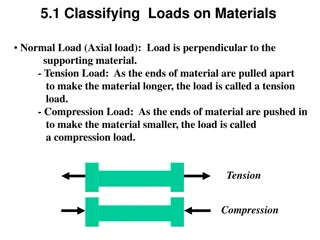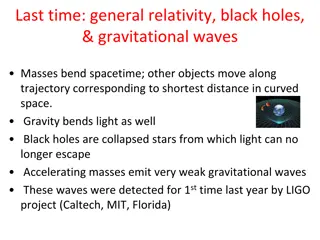Pre-strain Effect on Bendability in Three-point Bending Test
This study investigates the influence of pre-strain on the bendability of sheet metals, specifically focusing on a three-point bending test using the Gurson-Tvergaard-Needleman model. The research delves into the deformation behavior and fracture properties, particularly in AA5754 aluminum alloys, shedding light on how pre-strain impacts tensile and bending characteristics. The constitutive model utilized in the analysis provides insights into void volume fractions, stress tensors, and material behavior under bending conditions.
Download Presentation

Please find below an Image/Link to download the presentation.
The content on the website is provided AS IS for your information and personal use only. It may not be sold, licensed, or shared on other websites without obtaining consent from the author.If you encounter any issues during the download, it is possible that the publisher has removed the file from their server.
You are allowed to download the files provided on this website for personal or commercial use, subject to the condition that they are used lawfully. All files are the property of their respective owners.
The content on the website is provided AS IS for your information and personal use only. It may not be sold, licensed, or shared on other websites without obtaining consent from the author.
E N D
Presentation Transcript
Study of Pre-strain Effect on Bendability in Three-point Bending Test Presented by: Mehdi Shahzamanian Co-authors: Amir Partovi Dr. Peidong Wu Department of Mechanical Engineering McMaster University August 27th, 2020
[1]. Introduction: Bending is an important deformation mode in many applications and it is important property in a range of applications and extensively used in the auto industry [1]. Three-point bending test Gurson-Tvergaard-Needleman (GTN) model with considering growth and coalescence is used in [2, 3] to investigate the ductile fracture in bending test for sheet metals. In [4], the influence of pre-strain on the tensile and bending properties of AA5754 aluminum alloys is studied and it is found that fracture occurs early in both tests. [1] D.J. Lloyd, M. Gallerneault, and R.B. Wagstaff, The deformation of clad aluminum sheet produced by direct chill casting. Metallurgical and Materials Transactions A, 2010. 41(8): p. 2093 2103. [2] Soyarslan, C., et al., A combined experimental numerical investigation of ductile fracture in bending of a class of ferritic martensitic steel, International Journal of Solids and Structures. 2012. 49(13): p. 1608-1626. [3] Cha, W.-g., N. J. M. Kim, and M. International, Quantification of micro-cracks on the bending surface of roll formed products using the GTN model, Metals and Materials International. 2014. 20(5): p. 841-850. [4] Sarkar, S.J., Kutty, T.R.G., Conlon, K.T., Wilkinson, D.S., Embury, J.D., Lloyd, D.J.: Tensile and bending properties of AA5754 aluminum alloys. Materials Science Engineering: A 316(1-2), 52-59 (2001). 1/8
[2]. Constitutive model; Gurson-Tvergaard-Needleman (GTN) model: Gurson-Tvergaard-Needleman (GTN) model [5-7]: ? ?, ?,? =??2 3?2?? 2 ? ?2+ 2? ?1??? 1.0 + ?2? 2= 0 2 ?, ??+?? ?? ?? ?? ??? ? ?? ??? ? ?? ?? 2???? 1 ?? ? = 1 ? ???:? ??? + ? = 2 ? ?? ??? ? > ?? ???? ????? ???? ?????????? ?: void volume fraction ?: Macroscopic Cauchy stress tensor ?: Matrix stress ??: Hydrostatic pressure ?1 and ?2: Calibrated parameters ??: Critical void volume fraction ??: Void volume fraction at failure 1 ?1 ?? Void nucleation volume fraction ??: Plastic strain standard deviation for void nucleating ?: Mean equivalent plastic strain ?? = ? ? ?1 ?2 ?? ?? ?? ?? ??? ?? Matrix material 0.0033 0.3 10 1.5 1.0 0.04 0.3 0.1 0.15 0.25 [5] Tvergaard, V. and A. J. A. m. Needleman, Analysis of the cup-cone fracture in a round tensile bar. Acta Metallurgica, 1984. 32(1): p. 157-169. [6] Tvergaard, V. J. I. J. o. f., Influence of voids on shear band instabilities under plane strain conditions, International Journal of Fracture. 1981. 17(4): p. 389-407. [7] Tvergaard, V. J. I. J. o. f., On localization in ductile materials containing spherical voids, International Journal of Fracture. 1982. 18(4): p. 237-252. 2/8
[3]. Problem formulation: Schematic of three-point bending ?? ?? ?? ?? ?? Sheet geometry plane strain parameters (mm) thickness 20 2.5 10 0.25 0.2 13 3/8
[4]. Results: plane strain quadrilateral element CPE4R in ABAQUS/Explicit Middle section of specimen FE configuration of three-point bending test in ABAQUS 1200 1000 Force (N) 800 600 100x150 elements 400 60x110 elements 200 0 0 1 2 3 4 Punch stroke (mm) Mesh sensitivity effect on force-displacement curve 4/8
[4]. Results; effect of pre-strain on force-displacement curve: 1200 1000 800 Force (N) 0% prestrain 5% prestrain 10% prestrain 15% prestrain 600 400 200 0 0 1 2 3 4 Punch stroke (mm) Maximum force decreases with increase of pre-strain value. Fracture initiation happens early with increase of pre-strain value. 5/8
[4]. Results; effect of pre-strain on void volume fraction: 0.3 0.25 Void volume fraction 0.2 0% prestrain 5% prestrain 10% prestrain 15% prestrain 0.15 0.1 0.05 0 0 1 2 3 4 Punch stroke (mm) The initial void volume fraction in bending test increases with increase of pre-strain value. Although the initial void volume fraction in the bending test is not significant, this small value has a significant effect on fracture strain. 6/8
[4]. Results; effect of pre-strain on void volume fraction: 0.14 ?? ???? ?= ln ?? 0.13 Bending fracture strain 0.12 0.11 0.1 0.09 0.08 0.07 0.06 0 5 10 15 20 Pre-strain percentage (%) As mentioned earlier, the initial void volume fraction in the bending test is not significant, but this small value has a significant effect on fracture strain. Fracture strain decreases with increase of pre-strain value. 7/8
[5]. Conclusion: The GTN model is able to simulate the three-point bending test and analyze the pre- strain value on bendability in a good agreement with experiment. The initial void volume fraction in bending test increases with increase of pre-strain value. Pre-strain is found to reduce maximum force in the bending test and cause early fracturing. The fracture strain decreases with increase of pre-strain value. 8/8
